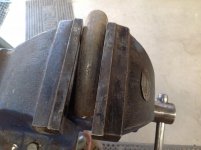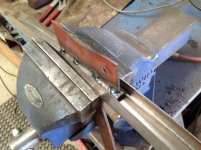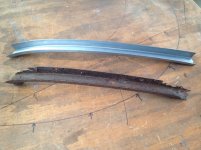Ok, that makes sense now. Lionel, you used a single piece of sheet to make both the vertical and horizontal sections of the flange. I was trying to make the two parts to weld together, fighting to get the vertical to the right (correct) radius.
With your way, I only need to work with the radius once, after I've made the combo piece, and work it until the radius matches the cowl/fender. I'll need to match the cowl first on mine, then work my fender's curve to match it.
All this may be academic as I have found (well Dad found) two fenders for me. Shipping was awful, but the fenders are better than what I have and they were very reasonable (very very reasonable). They'll still need some work, but it looks like the flanges are intact, and absolutely no bondo!
I'll still work on this one and see where it takes me. I've gotten a bit better at welding, though practice makes perfect, and I won't quit my day job.
I've gotten really good at cleaning and de-rustifying parts, sand-blasting, and laying down vinyl on cap rails. My seats aren't quite how I'd like them to be, but I'm taking a break from them for now.
I've been putting off the major hurdle I have: getting the tub squared and welded back together. But that is for another thread.

 Hi Guest!
Hi Guest!

 smilie in place of the real @
smilie in place of the real @
 Pretty Please - add it to our Events forum(s) and add to the calendar! >>
Pretty Please - add it to our Events forum(s) and add to the calendar! >> 



